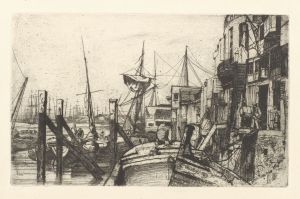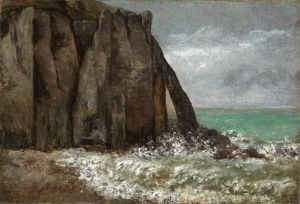
Lobster pots
A hand-painted replica of James Abbott McNeill Whistler’s masterpiece Lobster pots, meticulously crafted by professional artists to capture the true essence of the original. Each piece is created with museum-quality canvas and rare mineral pigments, carefully painted by experienced artists with delicate brushstrokes and rich, layered colors to perfectly recreate the texture of the original artwork. Unlike machine-printed reproductions, this hand-painted version brings the painting to life, infused with the artist’s emotions and skill in every stroke. Whether for personal collection or home decoration, it instantly elevates the artistic atmosphere of any space.
James Abbott McNeill Whistler was an American artist known for his significant contributions to the art world during the 19th century. He is best remembered for his innovative approach to painting and his influence on the Aesthetic Movement. One of his lesser-known works is "Lobster Pots," which reflects his keen interest in capturing the subtleties of everyday life and the natural environment.
"Lobster Pots" is a painting that exemplifies Whistler's unique style, characterized by his use of color, composition, and attention to detail. Whistler was known for his ability to convey mood and atmosphere through his art, often focusing on the interplay of light and shadow. This particular work is believed to depict a scene involving lobster pots, which are traps used for catching lobsters, typically placed in coastal areas.
The painting likely showcases Whistler's fascination with maritime themes, a subject he explored in various other works. His interest in such themes can be traced back to his time spent in coastal regions, where he was inspired by the sea and its surroundings. Whistler's ability to capture the essence of these environments is evident in "Lobster Pots," where he uses his signature style to bring the scene to life.
Whistler's approach to painting was heavily influenced by his belief in "art for art's sake," a philosophy that emphasizes the intrinsic value of art, independent of any moral or utilitarian function. This belief is reflected in "Lobster Pots," where the focus is on the aesthetic qualities of the scene rather than any narrative or symbolic content. Whistler's use of color and composition in this work demonstrates his commitment to creating visually harmonious pieces that evoke an emotional response from the viewer.
Throughout his career, Whistler was known for his meticulous attention to detail and his ability to capture the fleeting effects of light and atmosphere. In "Lobster Pots," these qualities are evident in the way he renders the textures and forms of the lobster pots and their surroundings. His use of a limited color palette and subtle tonal variations adds to the overall mood of the painting, creating a sense of tranquility and timelessness.
Whistler's influence on the art world extended beyond his own works, as he played a significant role in shaping the Aesthetic Movement. This movement, which emerged in the late 19th century, emphasized the importance of beauty and aesthetic experience in art. Whistler's contributions to this movement are evident in "Lobster Pots," where his focus on form, color, and composition aligns with the movement's ideals.
In summary, "Lobster Pots" by James Abbott McNeill Whistler is a testament to the artist's skill and his dedication to capturing the beauty of everyday scenes. Through his use of color, composition, and attention to detail, Whistler creates a work that embodies the principles of the Aesthetic Movement and reflects his belief in the intrinsic value of art. While not as widely recognized as some of his other works, "Lobster Pots" remains an important example of Whistler's artistic legacy and his contribution to the development of modern art.


















